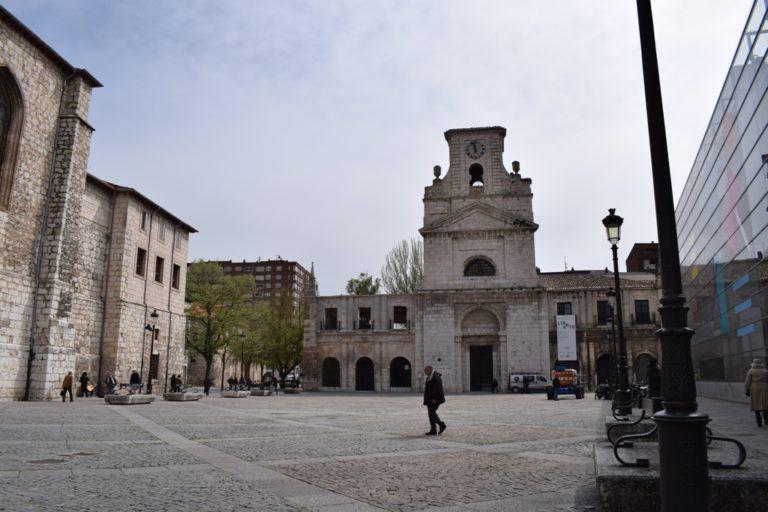1. LAS LLANAS
La llana de afuera y la llana de adentro son privilegiados testigos del paso de los siglos en el entorno catedralicio y evidencian la progresiva extensión hacia zonas más llanas por parte de una población que había ido desarrollándose en las laderas del castillo. Aquí podemos encontrar algunos de los rincones más emblemáticos de la ciudad histórica, del que destacan sus plazas empedradas.
2. HUERTO DEL REY
Popularmente conocida como «la Flora», antiguamente plazuela del Obispo de Almería y plazuela de la Armería.
Aquí estuvieron ubicados los antiguos palacios con sus propiedades adyacentes del rey Fernando I de Castilla del siglo XI. Con el andar de los tiempos, esta plaza acogió residencias de destacadas familias burgalesas de los siglos XVI y XVII.
En el siglo XVIII, a raíz del proceso de saneamiento y remodelación de esta zona, se construyó una nueva fuente dedicada a la diosa Flora, madre de la naturaleza. La escultura de la fuente fue diseñada por el escultor burgalés Manuel Romero.
3. PLAZA MAYOR
En el pasado recibió diversos nombres, siendo uno de los más conocidos el de Plaza del Mercado Menor. Hoy, su aspecto actual sigue hablando de un origen relacionado con las actividades mercantiles. Todo ello convivía con su función de escenario de las fiestas patronales, presididas por el concejo desde la antigua Puerta de Carretas, que fue sustituída a finales del siglo XVIII por el edificio del actual ayuntamiento.
4. PLAZA DE SANTO DOMINGO
Conocida antiguamente como plaza del Mercado Mayor, formaba junto a la plaza de la Libertad el único espacio dedicado, fundamentalmente, a la venta del ganado. Estas dos plazas quedaron separadas en el XIX tras la construcción de los Soportales de Antón. Hoy en día, la plaza de Santo Domingo constituye uno de los principales espacios comerciales del centro de la ciudad.
5. PLAZA DE LA LIBERTAD
También conocida como Plaza del Cordón debido a la presencia imponente de la Casa del Cordón, residencia oficial de los Reyes Católicos durante sus estancias en Burgos, este elegante espacio urbano ocupaba una función predominantemente comercial, alojando el Mercado Mayor, además de refinadas fiestas señoriales y cortesanas celebradas en honor de los ilustres visitantes de la residencia real.
6. PLAZA DE SAN JUAN
Una de más emblemáticas plazas de la ciudad. En la época medieval albergaba un importante complejo asistencial del Camino de Santiago, y en ella se congregaban los peregrinos que esperaban para ser atendidos en el hospital. Era el punto de entrada a la urbe amurallada, a la que se accedía por el Arco de San Juan. Hoy en día, la plaza integra el Burgos histórico y el moderno, aunando estilos y con una clara vocación cultural. En los restos del monasterio se ubica el museo Marceliano Santamaría. En lo que fue el hospital hoy encontramos una moderna biblioteca que solo conserva la portada del antiguo monumento. También podemos admirar la bella iglesia gótica de San Lesmes, y el Arco de San Juan, justo antes de cruzar el puente sobre el río Vena, delimitado por cuatro leones con escudos y símbolos burgaleses.
7. PLAZA DE MIO CID
La plaza del Mio Cid, Antigua plaza del San Pablo en la que desemboca el puente del mismo nombre y donde se encontraba una de las doce puertas de la ciudad. Su aspecto actual es fruto de las profundas remodelaciones que experimentó desde finales del XVIII, al ser el punto de arranque del emblemático paseo del Espolón y donde se erigieron el monumental palacio de la Diputación y el emblemático Teatro Principal. Parada de las diligencias durante mucho tiempo, adquiere su fisonomía más característica cuando, en 1955, se coloca la estatua ecuestre del Cid que la preside, obra de Juan Cristóbal.



